
A gathering of African American men at Maricopa City Hall delved into the fallout of skin-tone prejudices within the African American community at a Feb. 3 Men’s Cultural Awareness Symposium, a Black History Month event.
“We want to go forward and embrace each other as all our colors together as a group,” said event-organizer Zelmer Hagler.
His friend Hannibal Muhammad, a student assistant minister of the Nation of Islam in Phoenix, said there is still often a communication barrier between light-skinned and dark-skinned African Americans.
“We have to break that barrier of why we can’t talk to each other,” he said, “why, when we cross paths, I turn the other way. You’re my brother. I want to know who you are. I see you. I want to reach you.”
Muhammad, who is dark, said it is something he has seen since he was a child and sees today among his own young children.
“’Don’t talk to him. He’s dark.’ That’s what I had to face as a child,” he said. “’Look at his hair; his hair’s too kinky, it’s nappy, it’s too curly.’ That’s what I had to face as a child.”
He is bothered by trends of straightening and lightening hair or even bleaching skin to look lighter and be more accepted.
“Last year when [my daughter] was in first grade, one girl told her she wouldn’t play with her because of her hair,” he said. “These are the things that we’re still dealing with even today , and it’s 2018.”
Tim Seay, grand master of the Most Worshipful Prince Hall Grand Lodge of Arizona, brought the perspective of growing up light-skinned.
“You know who’s roughest on us for being light? Our own people,” Seay said.
He said his mother was light and his father was dark. Growing up in the 1970s, he saw continuing evidence of skin-tone prejudices within the community. That included sorority sisters pursuing light-skinned men in hopes of having light-skinned babies.
“What is the big deal between light skin and dark skin, and who started it?” he asked, tracing the attitudes back to slavery with “house Negroes” and “field Negros.”
“They started that. But if you look behind the scenes, for a Negro to be light back then, there had to be some more to the story behind that. So why is it the house Negro got treated better? That was the master’s child. He was going to be treated better anyway. That’s not our fault. But we carried it on so far to this day.”
He showed a series of pictures of past grand masters of his freemasonry lodge, with most of the early leaders obviously light-skinned, which possibly played a large role in their selection as grand masters. Prince Hall lodges are predominantly African American.
Rev. Robby Rhodes called the ongoing divisions among shades of black was spiritual warfare.
“The way you think ultimately dictates how you live,” he said. “From the Christian perspective, there is a battle inside all of us, and the battle begins in our individual minds. The prince of darkness wants to leave vestiges of bad memories of the past and how we were treated, and if you are light-skinned somehow you are better than a dark-skinned person.”
Muhammad said putting aside attitudes about skin tones is crucial to creating unity in the community. He said the divisions among the men have badly affected their relationships with black women. He said women have moved into the spotlight of leadership because they are tired of waiting on the men to step up.
The symposium also heard from Roy Hayes, who read his tribute to African American women, and Chaz Jackson of Buffalo Soldiers of America, who spoke about the military history of the Buffalo Soldiers and posted a display on Cathy Williams, who disguised herself as a man to serve with the Buffalo Soldiers.
Councilmember Henry Wade pointed out African American involvement in the political and cultural life of Maricopa.
“Here in Maricopa, as far as the African America population is concerned, we exceed the state average. We range between 5 and 6 percent in the City of Maricopa. And we are engaged,” Wade said. “The African American Legislative Committee held a workshop here in Maricopa, and the organizers of the workshop said Maricopa was one of the most engaging communities that they had come in contact with.”
In an interpersonal exercise at the end of the symposium, light-skinned attendees faced dark-skinned attendees to share what they see in each other.
Ian Dume, a guest of Seay, said when he sees a dark-skinned man, “I see someone who is trying, someone who is a little angry at light skin, someone who has a lot of questions.”















![Who’s the Best Mom InMaricopa? Nominate now! Marlene Marshall, Christina Olivares, and Meghan Bremer. [Bryan Mordt]](https://www.inmaricopa.com/wp-content/uploads/2023/05/BCM_8465-218x150.jpg)

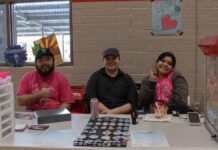
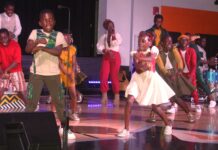

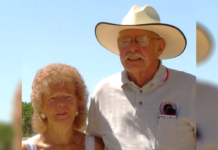
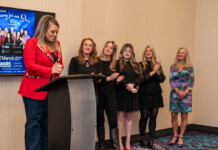
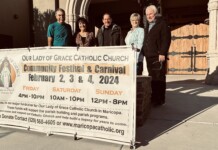
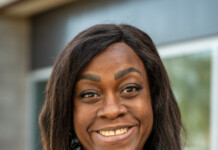


![Alleged car thief released without charges Phoenix police stop a stolen vehicle on April 20, 2024. [Facebook]](https://www.inmaricopa.com/wp-content/uploads/2024/04/IMG_5040-218x150.jpg)

![MHS G.O.A.T. a ‘rookie sleeper’ in NFL draft Arizona Wildcats wide receiver Jacob Cowing speaks to the press after a practice Aug. 11, 2023. [Bryan Mordt]](https://www.inmaricopa.com/wp-content/uploads/2024/04/cowing-overlay-3-100x70.png)


